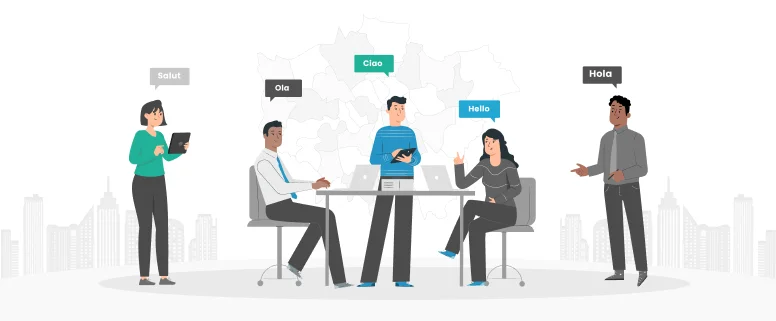Movies are the best form of entertainment. People like to hang out with their friends and watch their favorite movies in the cinema. Moviemakers make movies to address the social problems of the world. What is the use of movies, if they are not translated into your native language? You cannot enjoy the movie and the social message that the movie maker wants to convey is not conveyed. To release a movie for a global audience, you need to translate it into multiple languages.
Video Translation is Easier than You Think
Video translation was not a cost-effective and automated process a few years ago. Initially, the process of video translation required a running of three to four file transfers, and three specialists were required to initiate them. This process was very difficult, lengthy, and costly so to make this process easy, translation, transcription, subtitling, and voice-over tools have been introduced. They have made the video translation process very easy, faster, and cost-effective.
The Role of Globalizing Audio-visual Content
The best and effective way to translate movies into multiple languages is through audio-visual translation. With the help of globalized audio-visual content, you can reach the target audience easily and can enhance the number of people who watch and enjoy your movie. It is just like website optimization. It is costly somewhat, but the outcomes it produces are worth it. Many translation companies are providing an audiovisual translation in various languages, and its price depends upon the complexity of the language that you select. These companies have a team of native translators that can convert and add audiovisual effects in the movies. This is a very complex task because the translator needs to produce such audiovisual content that resonates with the culture and region of your viewers.
Various Tasks Performed in Movie Translation
There are various tasks involved in the translation of films like subtitling and dubbing. These tasks have different costs. If you want your movie to be successfully seen across different cultures, then you should adopt these techniques. Let’s have a look at them one by one.
Subtitling
This option has been used by smaller regions in the translation of the movies. These smaller regions are the countries with a population of around 10 million people or less than it. This option is cheap and good for movie makers that have a low budget. Portugal and Spain are a few of these countries that apply subtitles to foreign television shows. At present many countries have two official languages and this is another reason that subtitling is getting very popular. The benefits of this option are:
Read More: Translation of Film Subtitle
1. It is 15 times cheap than the dubbing option.
2. The main message of the recipient remains the same because it is not important to integrate the dialogues and actors’ lips.
3. You can hear the original message and can learn a new language.
There are also some disadvantages in using subtitles that can restrict filmmakers from employing it. It includes
1. This option slows the watching speed as the watcher needs to read the comments and it will distract their attention from the exact message.
2. Limited space is required because many languages expand after translation.
3. The production time gets longer.
4. The imbrication of colors also becomes a problem.
Dubbing
The next method used in the movie translation is called dubbing. In this process, the source audio track is removed and a new recorded language is added. Many countries of central Europe are using this method in the translation of movies and TV shows. The countries that have only one official language considered it the best option. In this process the critical thing to obey is censorship. The advantages of this method are:
1. It provides a sense of identity and comfort to the movie watchers.
2. When the movie is dubbed in the native language, it imparts the intended message clearly to the audience.
3. You can understand the idioms and humor well and it is dubbed in a way that the native population can understand it easily.
4. Dubbing makes the localization process easy and people think that movies are specially made for them.
Some of the disadvantages of dubbing are
1. The voices are not synchronized by the lip-sync of the actors.
2. People get bored with similar voices.
3. The selection of voice is not appropriate and does not resonate with the region.
Step-by-Step Translation of a Film
Once you have added subtitles, the step-by-step movie translation process includes
1. You need to identify the scope and nature of the film.
2. Define the required assets that are transcript and framework.
3. Start doing the translation of dialogues.
4. Adjust the timings and settings.
5. Use quality assurance tests.
6. Engineering
The method of dubbing is similar to other processes with few differences. When the translators have done the translation, then you need to apply different techniques to check whether the script has adopted the translation material or not. After that actors should view the translation with voiceover. At the time of voiceover, you need to check the expression, intonation, and tone. In the end, you need to check the quality.
Wrapping Up
The translation of the movie will benefit you if you localize your movie translation project. The movie needs to be translated according to cultural and regional intricacies. CCJK is here to help you in this regard. We have a team of native translators that are subject matter experts in their fields and provide you with seamless movie translation services in the fastest turn-around time and economical rates. For further details, contact us.





